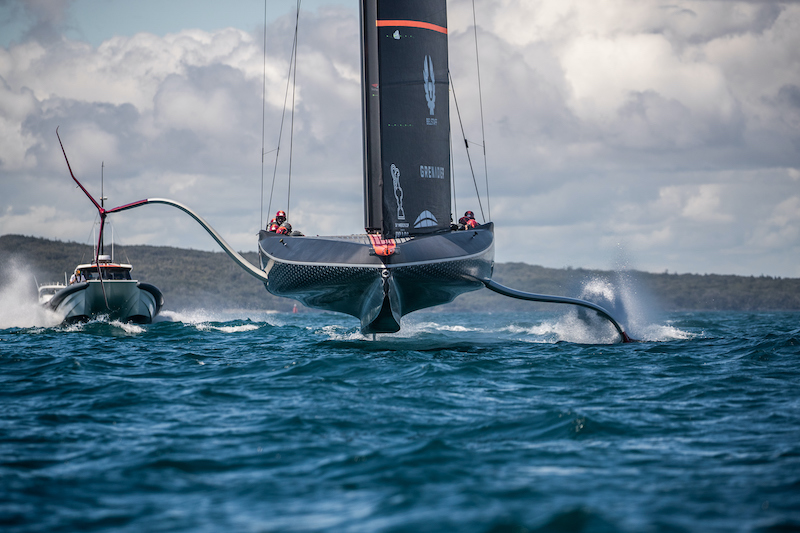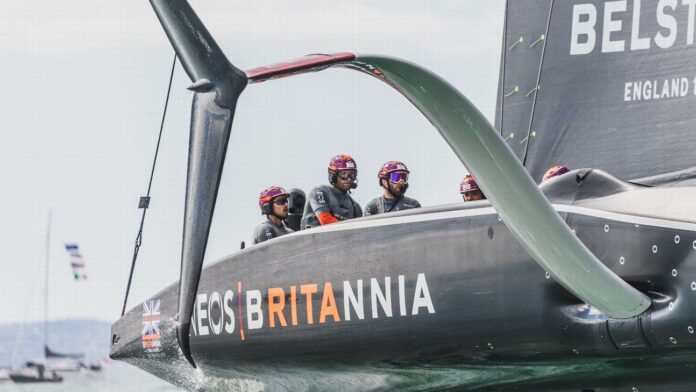The Mercedes Formula One team has joined forces with British sailor Ben Ainslie in a quest to win the America’s Cup for Great Britain’s Royal Yacht Squadron. The America’s Cup is the oldest international trophy in sport, predating the Olympics by 45 years, but has not been won by a British team since it was first held as a race around the Isle of Wight in 1851.
The Ineos Britannia team, skippered by Ainslie, hopes to change that by working closely with British-based Mercedes team to build a yacht capable of defeating the current holders, Emirates Team New Zealand. The link-up between the two teams comes via Ineos, which owns a third of the F1 team and is the main backer of Ineos Britannia.

The sailing team will be based at Mercedes’ headquarters in Brackley, leaning on the engineering resources of various departments via the F1 team’s Mercedes Applied Science division. Mercedes is expecting to have as many as 50 people working on the early design process of the yacht once the regulations, date and location for the 37th America’s Cup are agreed in mid-November by New Zealand and Great Britain. Mercedes’ chief technical officer, James Allison, who recently took a step back from the F1 side of the company, will be the technical lead on the yacht project. While the project has an obvious commercial tie-up via Ineos, Mercedes is also keen to make the project work for the engineering benefit of the F1 team. The America’s Cup is often known as ‘F1 on water’, and clear links can be made between the hydrodynamics that allow a racing yacht to “fly” on its foils in the sea and the aerodynamics that keep an F1 car pinned to the track.

But Mercedes team principal Toto Wolff says the joint project will offer more than just a new revenue stream for the team through Mercedes Applied Science.
“We have had situations where engineers said, we have done this for seven years — and many were even longer — with seven world championships and they are asking where the next challenge is,” Wolff said. “And it doesn’t go any bigger than the challenge of winning the America’s Cup as Challenger of Record. “You are being the underdog, so you need to do an even better job. So that is of benefit because we retain the ability in-house and they are not going elsewhere — within the industry or outside. Some of the people throughout the departments have said this is a nice challenge that they would like to take up for the next three or five years and gain some understanding, which probably can be deployed back into Formula One.

“It’s almost like an activity that is so competitive that you need all your cognitive and intellectual concentration and that becomes an advantage when you are looking back into Formula One and it takes you out of your comfort zone. ”Part of the reason the Mercedes team can afford to lend significant resources to the America’s Cup campaign is thanks to Formula One’s new budget cap this year. The introduction of a $145 million spending cap in 2021 forced the team to make cuts in its design and engineering departments, but by shifting staff to a non-F1 project outside the cap they can continue to work for the team. “From a cost cap point of view, this team was bigger last year than you could afford in a cost cap this year and that means a certain amount of our resources is able to work on this type of project,” Allison said. “As the rhythm of the Cup campaign requires it, hopefully it will intermesh adequately well with the corresponding demands that happen over in F1 land, so all the skill that we have here can be brought to bear.”

Mercedes Applied Science also works on other projects, including the design and optimisation of road bikes, running shoes and Ineos’ off-road vehicle the Grenadier. Wolff said the decision to diversify the business away from F1 came from looking at the success of sports franchises in the U.S.A..
“We looked at this pretty early because I’m always keen to learn from other sports leagues and when you look over the ocean at the most developed American sports leagues – the NBA and the NFL – these guys have diversified into real estate and into the hospitality business by the sheer fact that they are having a stadium,” Wolff said. “And I think for us the logical next step is diversifying into engineering. We have created all this I.P. that we have never deployed on any other vehicle other than a racing car. “We have never monetised any of the I.P. that exists here, and you are talking billions of spend into technology in a Formula One team, so that’s why it sounds pretty logical that other teams are also looking at that space.

“But Mercedes Applied Science is not a commercial engineering entity. We are not pitching actively for engineering jobs, but we want to work with people who want to break records or win championships in land, sea, air and space. We have seen how the most challenging of all racing, the pinnacle comparable to Formula One, and this is not in the pursuit of margin, but more in the pursuit of learning and diversification for the benefit of Formula One.
“In the same way, a great new project for engineers that have learned their laurels in Formula One but they want to look at something different. Having said that, it needs to stand on its own commercial legs. “It’s our way of diversifying into other business areas, but we need to make sure that we are a contributing partner with the same ambition that we have in Formula One racing but without distracting from any of the two activities: they must run in parallel. “We don’t want to read the headline in three years that since we have started sailing we haven’t been winning on the road. That must not happen.”





